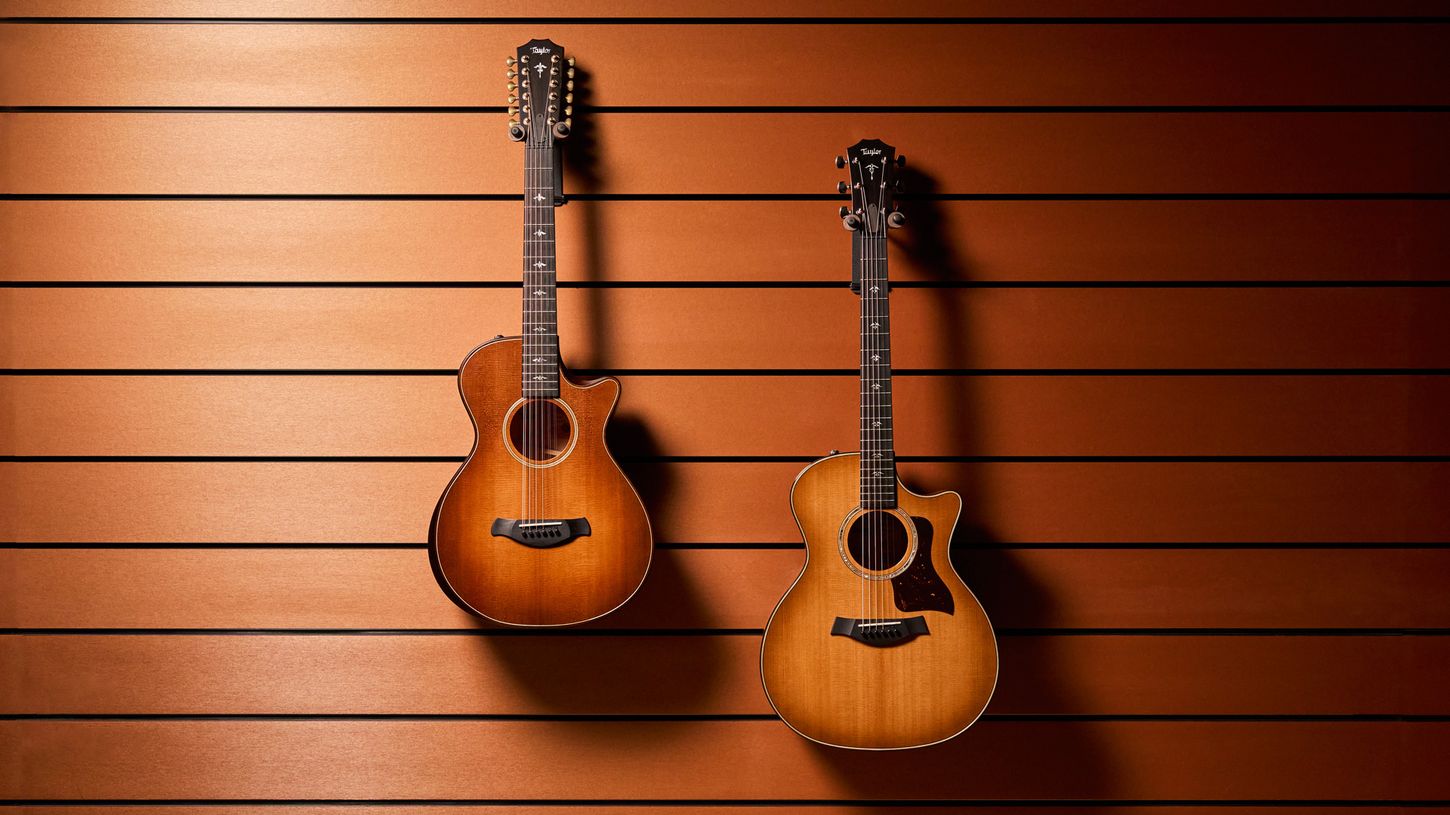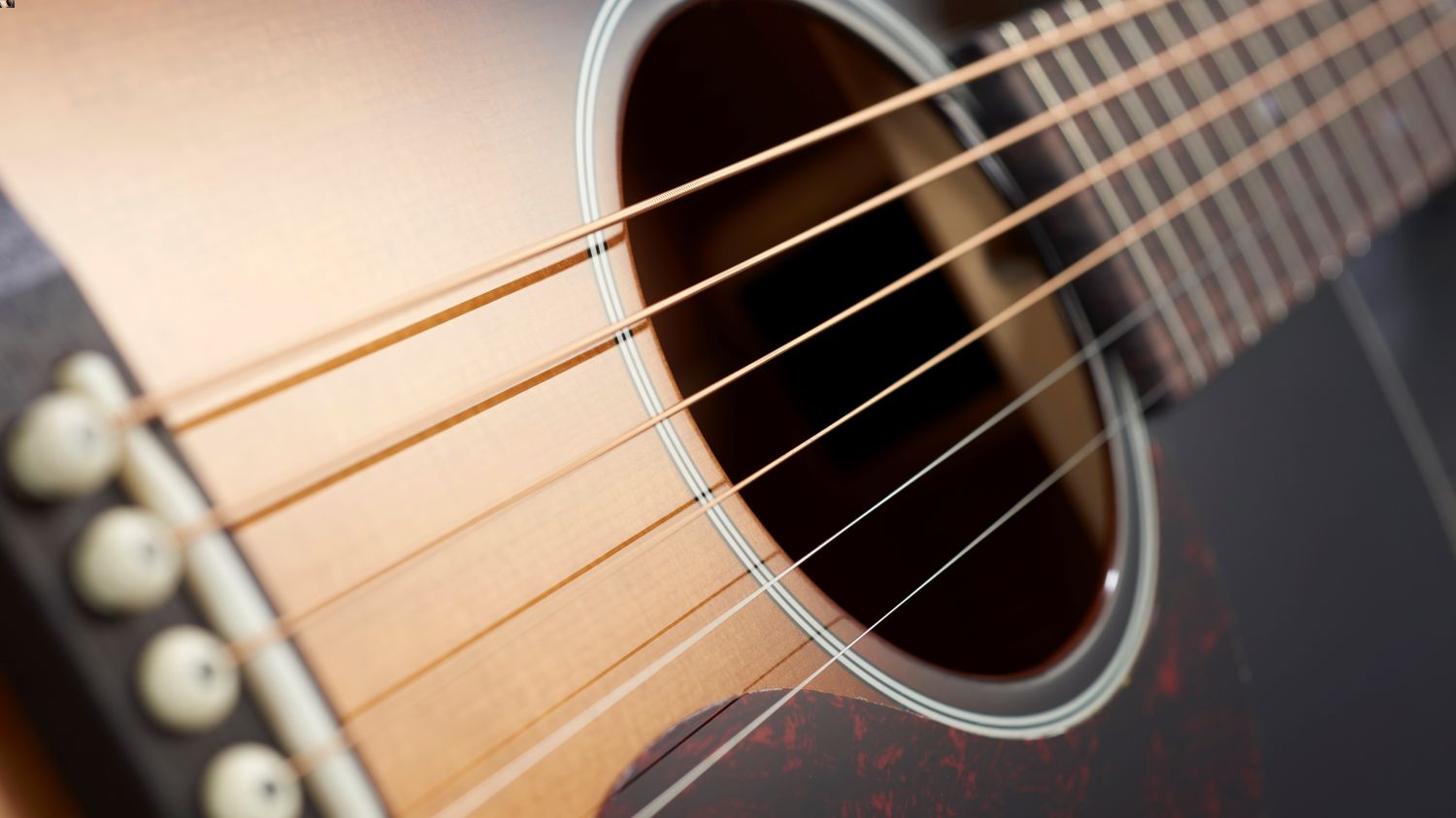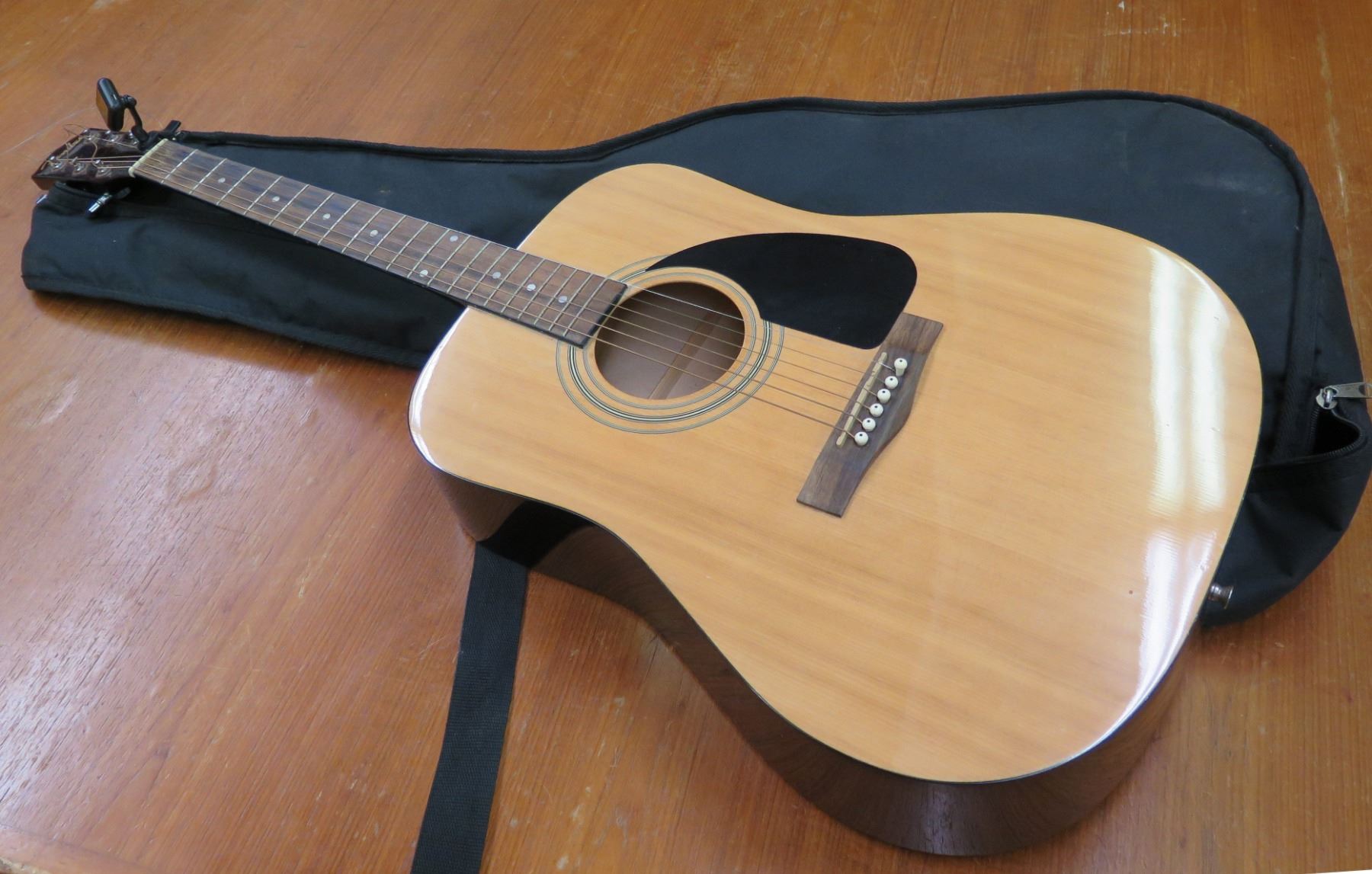Home>Production & Technology>Acoustic>What Acoustic Guitar Strings


Acoustic
What Acoustic Guitar Strings
Published: March 10, 2024
Discover the best acoustic guitar strings for a clear, resonant sound. Find the perfect acoustic strings for your playing style and preferences.
(Many of the links in this article redirect to a specific reviewed product. Your purchase of these products through affiliate links helps to generate commission for AudioLover.com, at no extra cost. Learn more)
Table of Contents
Introduction
Acoustic guitar strings are the unsung heroes of the music world. They are the vital link between the player's fingers and the resonant body of the guitar, translating the musician's emotions into beautiful melodies. Whether you're a seasoned professional or a budding enthusiast, understanding the nuances of acoustic guitar strings is essential for achieving the desired tone and playability.
The world of acoustic guitar strings is diverse and multifaceted, offering a wide array of options to cater to different playing styles and musical genres. From the warm, mellow tones of nylon strings to the bright, crisp sound of steel strings, each type has its own unique characteristics that can significantly impact the overall sound of the instrument.
As a guitarist, the choice of strings is a deeply personal decision that can profoundly influence your playing experience. The right set of strings can breathe new life into an old guitar, while the wrong ones can stifle its potential. Therefore, understanding the various types of acoustic guitar strings and the materials used in their construction is crucial for making informed decisions that align with your musical preferences.
In this comprehensive guide, we will delve into the intricacies of acoustic guitar strings, exploring the different types available, the materials used in their production, and the factors to consider when selecting the ideal set for your playing style. Additionally, we will discuss the essential maintenance and care practices that can prolong the lifespan of your strings and ensure consistent performance.
Whether you're seeking to achieve a warm, folk-inspired sound or a bright, articulate tone for intricate fingerstyle playing, understanding the nuances of acoustic guitar strings is the first step toward unlocking the full potential of your instrument. So, let's embark on this melodic journey and unravel the secrets of acoustic guitar strings together.
Types of Acoustic Guitar Strings
When it comes to acoustic guitar strings, there is a diverse range of options available, each with its own unique characteristics and sonic qualities. Understanding the distinctions between these various types is essential for selecting the strings that best complement your playing style and musical preferences. Let's explore the most common types of acoustic guitar strings:
1. Steel Strings:
Steel strings are the most prevalent type of acoustic guitar strings and are favored by musicians across a wide spectrum of genres, including folk, rock, country, and pop. These strings are known for their bright, articulate sound and robust projection, making them well-suited for strumming and flatpicking. Steel strings are typically made from high-carbon steel and are available in different gauges, offering varying levels of tension and responsiveness.
2. Phosphor Bronze Strings:
Phosphor bronze strings are renowned for their warm, rich tone and balanced sound profile. They are constructed using a combination of copper and zinc, with a small amount of phosphorus added to enhance durability and corrosion resistance. These strings are favored by acoustic guitarists seeking a mellower sound with pronounced midrange frequencies, making them ideal for fingerstyle playing and accompanying vocals.
3. Silk and Steel Strings:
Silk and steel strings, also known as "folk" or "parlor" strings, are designed to offer a softer, more gentle playing experience. These strings feature a core made of silk fibers, which is then wrapped with a lower tension steel winding. The result is a warm, mellow tone with reduced string tension, making them well-suited for vintage and smaller-bodied guitars, as well as fingerstyle and blues playing.
4. Nylon Strings:
Nylon strings, commonly associated with classical and flamenco guitars, are treasured for their soft, smooth feel and warm, intimate sound. These strings are made from nylon filaments and are often used in fingerstyle and classical guitar playing, producing a tone that is gentle on the fingers and evocative in its resonance.
5. Coated Strings:
Coated strings are designed to offer extended longevity and durability. These strings feature a protective coating, typically made from polymers or other synthetic materials, which helps to resist corrosion and prolong their lifespan. Coated strings are available in various configurations, including steel and phosphor bronze, providing players with the option to enjoy a longer-lasting, consistent tone.
Understanding the unique characteristics of each type of acoustic guitar strings empowers musicians to make informed decisions based on their playing style, tonal preferences, and the sonic qualities they wish to achieve. Whether you're drawn to the bright, crisp sound of steel strings or the warm, mellow tones of phosphor bronze, the diverse range of acoustic guitar strings ensures that every player can find the perfect match for their musical expression.
Materials Used in Acoustic Guitar Strings
Acoustic guitar strings are meticulously crafted using a variety of materials, each contributing to the strings' unique tonal characteristics, playability, and longevity. Understanding the composition of these materials is essential for discerning guitarists seeking to tailor their instrument's sound to their individual preferences. Let's delve into the materials commonly used in the construction of acoustic guitar strings:
1. Steel:
Steel strings, prevalent in acoustic guitar setups, are typically crafted from high-carbon steel. This robust material provides the strings with exceptional tensile strength, allowing them to withstand the considerable tension exerted by the guitar's neck and bridge. The use of high-quality steel contributes to the strings' bright, articulate sound and responsive nature, making them well-suited for genres that demand clarity and projection, such as folk, rock, and country music.
2. Bronze Alloys:
Phosphor bronze and 80/20 bronze are the two primary alloys used in acoustic guitar strings. Phosphor bronze strings, consisting of a combination of copper, zinc, and a small amount of phosphorus, are revered for their warm, well-balanced tone and enhanced durability. On the other hand, 80/20 bronze strings, comprising 80% copper and 20% zinc, offer a brighter, more vibrant sound with pronounced treble frequencies. These bronze alloys play a pivotal role in shaping the overall tonal characteristics of the strings, catering to a diverse range of musical styles and playing techniques.
3. Nylon:
Nylon strings, synonymous with classical and flamenco guitars, are crafted from nylon filaments, offering a smooth, gentle feel under the fingers. The inherent flexibility and elasticity of nylon contribute to the strings' warm, intimate sound, making them an ideal choice for fingerstyle playing and genres that demand a softer, more delicate tonal palette. Additionally, the use of nylon minimizes the strain on the player's fingertips, allowing for extended playing sessions with minimal discomfort.
4. Coatings:
Innovations in string manufacturing have led to the development of coated strings, featuring a protective polymer coating that shields the strings from corrosion and moisture. This coating not only prolongs the strings' lifespan but also maintains their tonal integrity over an extended period. By mitigating the effects of oxidation and environmental factors, coated strings offer players a consistent, vibrant sound, making them an attractive option for those seeking long-lasting performance without sacrificing tone.
By comprehending the role of these materials in shaping the sonic and tactile qualities of acoustic guitar strings, musicians can make informed decisions when selecting strings that align with their musical aspirations. Whether it's the robust projection of steel strings, the warm resonance of phosphor bronze, or the gentle feel of nylon, the diverse materials used in acoustic guitar strings ensure that every player can find their perfect sonic companion.
Choosing the Right Acoustic Guitar Strings
Selecting the ideal acoustic guitar strings is a deeply personal and pivotal decision for any guitarist. The diverse array of string types, materials, and gauges available in today's market can be both empowering and overwhelming. However, by considering a few key factors, musicians can navigate this sea of options with confidence and precision.
Playing Style and Genre
The first step in choosing the right acoustic guitar strings is to consider your playing style and the musical genres you most frequently explore. If you gravitate towards strumming and flatpicking in genres like folk, rock, or country, steel strings may be the perfect match, offering bright, articulate tones and robust projection. Conversely, if fingerstyle playing or classical music is your forte, nylon strings or phosphor bronze strings may better suit your needs, providing warm, mellow tones and a softer feel under the fingers. Understanding how different string types complement specific playing styles is essential for achieving the desired tonal characteristics and playability.
Tonal Preferences
Every guitarist has a unique sonic vision, and the choice of acoustic guitar strings plays a pivotal role in realizing that vision. Whether you seek a bright, vibrant sound with pronounced treble frequencies or a warm, balanced tone with rich midrange resonance, the materials and construction of the strings significantly influence the instrument's sonic profile. Phosphor bronze strings are renowned for their warm, well-balanced tones, making them an excellent choice for musicians desiring a mellower sound. On the other hand, steel strings offer a brighter, more articulate sound, catering to those seeking clarity and projection. By aligning your tonal preferences with the sonic characteristics of different string types, you can curate a personalized and expressive sound palette.
String Gauge
The gauge of acoustic guitar strings, referring to the thickness of the strings, profoundly impacts playability and tonal response. Lighter gauge strings exert less tension on the guitar's neck and are generally easier to fret, making them well-suited for beginners and players who prefer a more effortless playing experience. Conversely, heavier gauge strings offer increased volume and resonance, making them a popular choice for experienced players and those seeking a fuller, more robust sound. By experimenting with different string gauges, musicians can fine-tune their instrument's responsiveness and tailor it to their specific playing dynamics.
Environmental Considerations
Environmental factors, such as humidity and temperature, can significantly impact the longevity and performance of acoustic guitar strings. For musicians in humid climates or those who frequently perform in outdoor settings, coated strings may offer enhanced resistance to corrosion and moisture, prolonging their lifespan and maintaining consistent tonal integrity. Additionally, regular cleaning and maintenance can mitigate the effects of environmental elements, ensuring that the strings retain their vibrant sound and playability over time.
Personal Experimentation
Ultimately, the process of choosing the right acoustic guitar strings is a deeply personal journey that often involves experimentation and exploration. Trying out different string types, materials, and gauges can provide valuable insights into how each element influences the instrument's sound and feel. By embracing this spirit of exploration, musicians can refine their sonic identity and discover the perfect set of strings that resonates with their musical expression.
In essence, choosing the right acoustic guitar strings is a nuanced and multifaceted endeavor that requires careful consideration of playing style, tonal preferences, string gauge, environmental factors, and personal experimentation. By embracing this holistic approach, guitarists can unlock the full potential of their instrument, crafting a sonic signature that is uniquely their own.
Maintenance and Care for Acoustic Guitar Strings
Maintaining and caring for acoustic guitar strings is essential for preserving their tonal clarity, playability, and longevity. By implementing simple yet effective maintenance practices, guitarists can ensure that their strings consistently deliver optimal performance and sonic integrity.
Cleaning and Wiping Down
Regularly cleaning and wiping down the strings after each playing session is a fundamental maintenance practice. This helps remove accumulated sweat, oils, and debris from the strings, preventing the buildup of grime that can dampen their vibrancy and responsiveness. Using a soft, lint-free cloth, gently wipe down each string, ensuring thorough removal of any residue. This simple routine not only preserves the strings' tonal qualities but also minimizes the risk of corrosion and premature wear.
Hygiene and Hand Care
Maintaining proper hand hygiene and care is equally important in preserving the lifespan of acoustic guitar strings. Washing hands before playing can prevent the transfer of oils, dirt, and moisture onto the strings, mitigating the accumulation of contaminants that can compromise their sound and feel. Additionally, keeping fingernails trimmed and smooth can reduce the likelihood of inadvertently damaging or prematurely wearing down the strings during playing.
String Lubrication
Applying a high-quality string lubricant or conditioner can significantly enhance the playability and longevity of acoustic guitar strings. These specialized products help reduce friction between the strings and the fretboard, minimizing wear and tear while facilitating smoother string bending and fretting. By periodically lubricating the strings, guitarists can maintain a comfortable playing experience and extend the intervals between string changes.
Storage and Environmental Considerations
Proper storage and environmental awareness are crucial for preserving the integrity of acoustic guitar strings. Storing the instrument in a protective case or gig bag when not in use shields the strings from dust, moisture, and fluctuations in temperature, safeguarding their tonal stability. Additionally, maintaining a consistent humidity level in the storage environment can prevent the strings from succumbing to excessive dryness or moisture, prolonging their lifespan and preserving their sonic characteristics.
String Changing and Rotation
Regularly changing the strings, as well as implementing a rotation schedule, is essential for ensuring consistent performance and tonal freshness. Over time, strings accumulate microscopic wear and lose their initial vibrancy, leading to a decline in tonal clarity and responsiveness. By adhering to a routine string-changing schedule and rotating sets to distribute playing wear evenly across all strings, guitarists can sustain a vibrant, balanced sound and extend the longevity of their strings.
Final Thoughts
Incorporating these maintenance and care practices into your acoustic guitar routine can significantly enhance the lifespan and performance of your strings. By prioritizing cleanliness, hand hygiene, lubrication, proper storage, and regular string changing, you can ensure that your acoustic guitar strings continue to resonate with clarity, warmth, and responsiveness, enriching your musical journey with every chord and melody.











